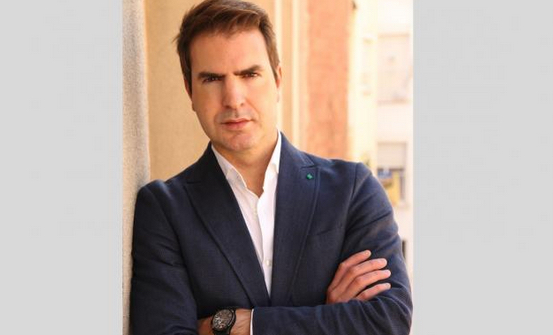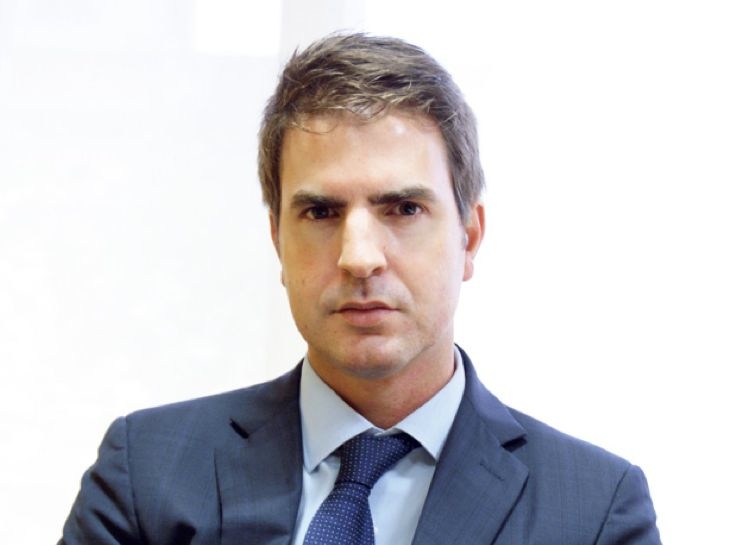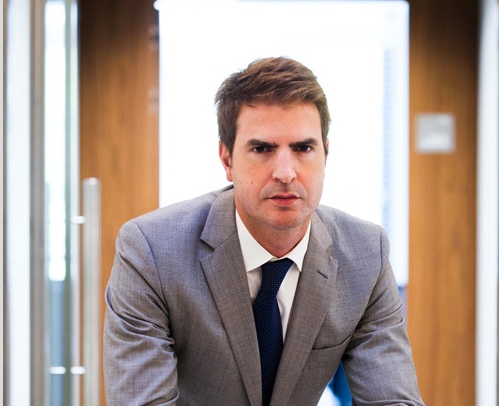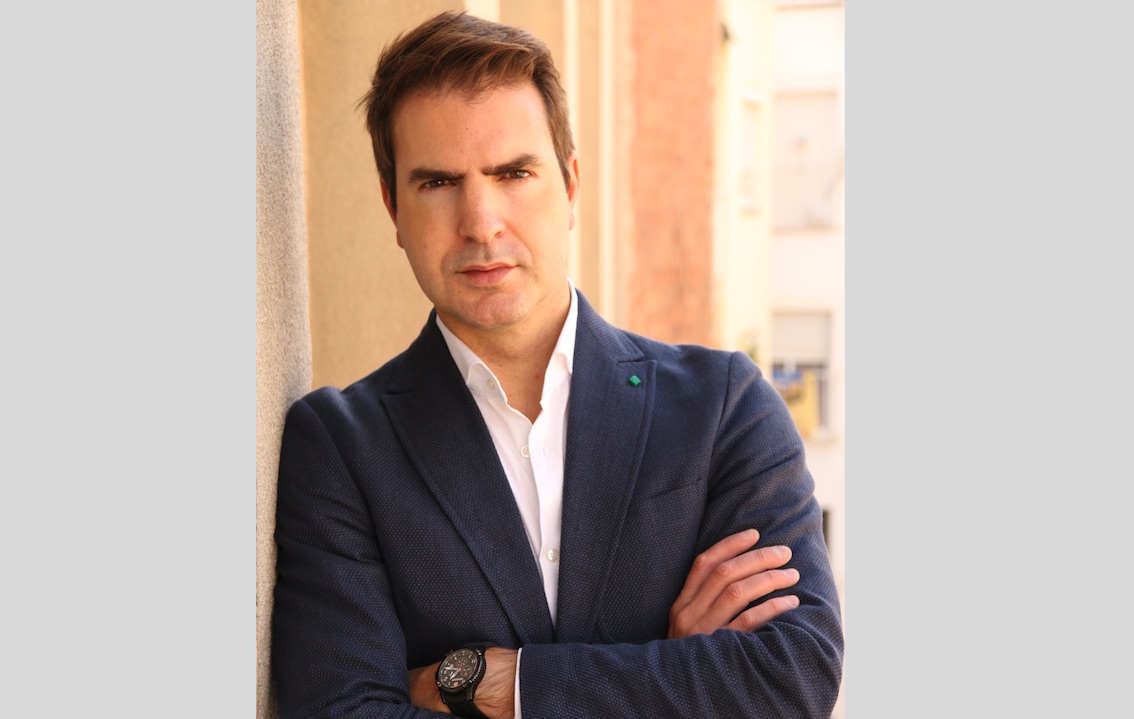Independent asset management in Spain is currently booming and most of these newly-focused funds are either set up as UCITS or structured as hedge funds. At the recent ForoMed Cap in Madrid, an annual event that brings together European investors and small and medium cap companies that are prime investment candidates for these independent funds, we caught up with Quim Abril, Founder and Hedge fund manager of the Global Quality Edge Fund, a project that just celebrated its 1st year anniversary.
In this interview with Funds Society, Quim Abril, Founder and PM takes a look back at his 1st year experience since launching the fund, the advantages it offers investors and the goals he has outlined for himself in the year ahead; including his on-going search for “extraordinary companies overlooked by the markets” and “growing the fund size to 10 million euros to start to attract institutional investors”.
The fund has recently celebrated its 1st year anniversary: What is your assessment of these months gone by and how has your fund performed?
I think my assessment could not be more positive. In the last 12 months, I successfully managed to set up and launch the fund, I have spoken to and met up with the senior management of our portfolio companies while also continued to raise funds by travelling in and out of Spain; visiting and privately talking to would-be investors in other main European capitals. In terms of total return, the fund has grown by 6.6% since inception or 4.5% year-to-date – even though our strategy is aimed at mid-to-long term growth.
Why should an investor choose Global Quality Edge Fund?
Global Quality Edge fund offers some unique characteristics that are not common in other funds in Spain or in the rest of Europe, outside the UK market: Firstly, Portfolio Concentration (UCITS do not allow for this); secondly, it invests in small companies overlooked by the market but nonetheless qualify as extraordinary investment opportunities; thirdly, it’s less correlated to equity market indices and lastly, we hedge our portfolio of shares when the economy begins to show signs of recession through tail hedging strategies.
Setting yourself apart from competition is one of your top priorities, why would you say this is even more relevant in today’s context?
ETFs have grown exponentially and their lower commissions are putting the banking sector under a lot of pressure; especially when the larger players sell passive-like management products under the impression that they are actively managed. The only way to truly stand-out is by real active management, uncorrelated to market indices. This is what Global Quality Edge Fund has set out to propose.
Would you define yourself as a value investor?
I’m not sure if I am but what I would say is that quality companies with sustainable competitive advantages do not trade at a 7-8x price to earnings, let alone in today’s economic cycle. Global Quality Edge fund therefore differentiates itself by buying true quality companies, below 15x its earnings in today’s environment and perhaps 10x during an economic recession.
In what type of companies do you invest? Why are the mostly small and mid cap?
The fund largely invests in extraordinary companies with solid and long-standing competitive advantages that are leaders in their niche markets with low or null competition threats, low broker analyst coverage, proven sound capital management, high ROIC and a clear interest alignment between the company and its shareholders. In terms of size, we do mostly invest in micro&small and mid&cap stocks. The reasoning behind this can be broken down into 10 points:
Firstly, 80% of the investable equity universe across the world is made up by companies with a market cap below 2.5 billion euros. These businesses are easier to understand, analyze and monitor given the fact that they focus and operate in niche markets. Thirdly, they are more approachable and you have a greater chance of speaking to their top and most senior management (the CEO) than you would do in a larger cap company. They also offer higher earnings growth and longer term returns that don’t always have to be at the expense of higher volatility. Their lower or non-existent broker analyst coverage, their uncorrelated price performance against benchmark indices, their higher percentage of insider trading, their increased likelihood of being M&A targets and the positive effect they experienced from the recent U.S. tax reform are other reasons why we draw our attention to these companies.
You state you do not invest in all sectors, which of these do you leave out and what advantages does this decision bring to the fund?
Even though now some value investors have commodity-driven businesses in their portfolios, I can categorically state that Global Quality Edge Fund will not invest in them. The reason behind it is because these companies are cyclical businesses, where the company has no control or pricing power on their products and services, since the supply and demand of these commodities (oil, copper, gold…) largely influences and dictates the companies’ performance. The fund only invests in anti or low-cyclical companies, achieving a higher forecasting certainty when mapping out the evolution of future earnings and lower expected volatility. The main goal is to be capable of analyzing the results of a company across an entire economic cycle, not only during current periods of bonanza. Airlines and restaurants are other industries in which we do not foresee investing.
You have a concentrated portfolio of companies, would you say this is an advantage or an inconvenience in asset management?
Portfolio concentration is one of 2 reasons why we chose to operate as a hedge fund, ruling out the UCITS structure – a more commonly adopted approach in Spain. To explain our reasoning, I always say that ‘a fund manager may have 5, 10 or 15 good investment ideas but never 50 or 60 good ideas. For that matter, you might as well choose an ETF’. At the same time, a concentrated portfolio allows for a better understanding and knowledge of the companies in a fund, reducing the likelihood of mistakes, as well as volatility. The American gurus in the business all have funds with 5 or 10 shares only but in Europe this level of concentration is hardly seen. Global Quality Edge Fund will invest in up to 25 different shares and the top 10 and 20 holdings will represent more than 50% and 80% of the fund’s capital. There are a number of academic papers that highlight how adding one more stock to a fund with more than 20 different investments [that do not necessarily have any sectorial correlation between them] does not substantially reduce the fund’s volatility.
You also insist on avoiding red accounting flags when investing, what are these red flags?
After reading and analyzing 10-Ks (ie: annual reports), you can clearly identify potential risks and creative accounting practices that could diminish or conceal the true earnings potential or the cash flow position of a company. The difficulty lies in the fact that these filings are long and complex to understand and without a solid knowledge base in accounting, these could be overlooked. They, therefore, require a detailed and manual analysis to uncover them. To quote an example, one of the most common red flags is an impaired goodwill adjustment, when the company is forced by its auditor to recognize the loss on its income statement after the acquired asset or business failed to meet the company’s expectations. In order to see if there is an underlying risk or red flag of this sort, we would have to determine if there is a direct high relation between ‘Goodwill’ and the company’s market cap. If there is one, we would immediately refer ourselves to the company’s 10-K filing to read up on the Goodwill and estimate the value of the adjustment – for example – check to see how cash flow projections were calculated; how the business units are split and reported on; how the macro hypothesis are implicit in the cash flow forecasts; see if there are any changes in methodology and analyze the transaction price composition on their material recent transactions.
Some other accounting Red Flags could be: Delay the earnings report date, change from conservative accounting policies to a more aggressive ones, extend an asset’s depreciation period life or increase residual value, too much off-balance sheet assets and not computing off-balance sheet assets like operating lease as a real debt , aggressive revenue recognition policies, not taking in account restricted cash, capitalize cost to the balance sheet (interest cost, software development and inventory),not threat pension deficit as more debt, etc.
One of your differentiating factors is how you choose to hedge, could you explain how these work and the benefit?
The idea behind hedging through options is to protect the tail-risk of the market, a practice that is also known as Tail-hedging. Throughout history, most drops in equity indices above 20% have been recorded when the economy enters into recession. Our most recent evidence of this is the dot-com bubble in 2000 and the financial crisis in 2008. To avoid or diminish the drop, we buy out-of-the-money put options on market indices to protect our fund from market downturns greater than 20-25% whenever there is a significantly high chance of this occurring throw the reading of US Conference Board indicators (Leading, Coincident and Lagging indicators).
Reaching out to companies is key when deciding to add them to your portfolio, why would you say this is a necessary step and how many companies do you meet throughout the year?
The main reason behind getting in touch with companies is to get a deeper understanding of the business and a broader sense of their market. In order to achieve this, you have to speak to the CEO; especially when a small cap sized company has low analyst coverage and information about their business is limited. Once we make contact, we gather useful insights that are not widely known. We find that they tend to share more information about themselves than a larger and more guarded listed company would. The lower the market cap, the higher the chance we have to speak to the CEO. However, reaching out to them requires preparation beforehand. We would only do this after running our own thorough analysis on the company’s numbers ensuring we make the most out of the call, listing a specific set of questions and doubts we may have come across. In 2017, we spoke to 45 companies’ senior management teams and during the first half of 2018, we are slightly ahead, compared to last year, on a year to date period.
Would you be able to tell us about a company you have invested in your fund?
Victrex plc is a British specialty chemicals company and global leader in engineering thermoplastics. Their signature polymer solution, PEEK, is an essential value-added component and key material used in different manufacturing industries. Their competitive advantage could not be beaten with a 65% market share; well ahead of the second, third and even from the rest of the players (25%) that make us this fragmented market, allowing Victrex to continue growing organically and inorganically. In terms of entry barriers, these come in the form of research and development investment (6% of Victrex’s total revenue) and, above all, high switching costs. Victrex’s clients would find it hard to replace PEEK with a substitute of lesser quality that would not compromise the quality of their own products. Their client retention is therefore very high helped by the fact that they personalize each of their products for their clients. To this day, Victrex continues to produce new products and uncover even more critical use cases where this material can prove essential for other industries. This has led the company to increase their market share even further, particularly in those segments where margins are higher and price increases are not hard to deliver. We bought Victrex at an average price of £18.5 in June last year and we sold it in January 2018 at £27, after reaching our target price and finding other investment opportunities with a higher safety margin.
Where and how to you find new investment ideas?
There are different ways to generate new investment ideas, from the most common approach by building out a screen and narrowing down to a list of companies to more interesting options like participating in investment forums and idea exchanges with other fund managers, especially those in the U.S.
In today’s environment, how do you deal with volatility and how do you react to it?
Our exposure to volatility is low, given the fact that our fund is made up of mostly small companies that are not as liquid and have low analyst coverage. In terms of liquidity, whenever there is a correction in the market (a downturn less than 20%), fund managers tend to sell their most liquid stock because most of the time there are very few securities available in the market. On the broker analyst front, earnings releases have little or no effect on the small companies’ share price, compared to larger listed companies that are exposed to higher volatility when broker estimates fail or exceed broker consensus expectations. If we look at our fund, the last twelve month volatility is 7% and the downside risk is below 5; numbers that are ways below comparable funds in the global market.
There is always a ‘but’ and in this case, an economic recession hits smaller companies the hardest, making their share price drop even further than bigger listed companies. Global Quality Edge Fund therefore uses Tail Hedging strategies to protect and preserve the total return of the fund compared to others that do not and find themselves immersed in significant losses during recession periods of the economy.
What are you objectives for next year?
Firstly, find extraordinary companies overlooked by the markets and the general public and patiently wait until they come across an adverse situation that temporarily drops their share price, making the point of entry of our investment more attractive with a reasonable margin of safety. I will also continue holding private discussions with would-be Global Quality Edge Fund investors, highlighting the reasons why they should invest in our fund; not only under the current macro-environment but under our broader and longer term view full economic cycle. Thirdly, I want to grow the fund size to 10 million euros to start to attract institutional investors by the end of this year.



 By Alicia Miguel Serrano
By Alicia Miguel Serrano
